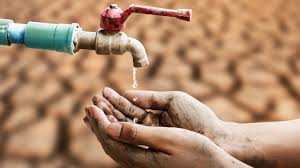
Escalating Water Crisis
Pakistan is facing a dire water crisis as its major reservoirs and dams reach alarmingly low levels, threatening the country’s agricultural output, energy generation, and overall water supply. The country’s reliance on irrigation for agriculture, which consumes the majority of its water resources, is being severely impacted by declining water levels in key dams such as the Tarbela and Mangla reservoirs. These dams are essential not only for water storage but also for hydroelectric power generation. As the water levels approach critical thresholds, experts warn that Pakistan could face prolonged drought conditions, worsening an already fragile water supply system.
Impact on Agriculture and Food Security
Agriculture is the backbone of Pakistan’s economy, with over 60% of the population dependent on farming for their livelihoods. The current water shortages are expected to severely disrupt crop production, particularly for water-intensive crops such as rice, wheat, and cotton. Farmers in many regions are already reporting reduced crop yields due to insufficient irrigation. The country’s food security is also at risk, as water shortages threaten both the quantity and quality of locally grown produce. This could lead to an increase in food prices, further exacerbating economic challenges for the country’s most vulnerable populations, who are already struggling with inflation.
Hydro Power Generation in Jeopardy
In addition to the agricultural sector, Pakistan’s energy supply is facing significant challenges as water shortages threaten hydroelectric power generation. Dams like Tarbela and Mangla contribute a substantial portion of the country’s electricity, but with their water levels declining, the ability to produce hydropower is severely limited. This could result in higher electricity costs and more frequent power outages, affecting both industrial production and daily life. With the energy crisis deepening, the government is facing pressure to find alternative sources of power, but the country’s reliance on expensive imported fuels makes this a difficult task.
Climate Change and Mismanagement
The water shortage crisis in Pakistan has been exacerbated by both climate change and poor water management practices. Climate change has led to unpredictable rainfall patterns and the melting of glaciers in the Himalayas, which are crucial for feeding Pakistan’s rivers. This has contributed to the country’s diminishing water reserves. Additionally, mismanagement of water resources, including inefficient irrigation systems and the lack of investment in water storage infrastructure, has worsened the situation. Despite being one of the most water-stressed countries in the world, Pakistan has failed to make significant progress in improving water conservation measures, and the current crisis highlights the urgent need for reform in both policy and practice.
A Call for Immediate Action and Long-Term Solutions
Pakistan’s water crisis requires immediate attention, and experts are calling for a comprehensive strategy to manage the country’s water resources more effectively. This includes building new dams and reservoirs, upgrading irrigation infrastructure, and implementing water conservation programs to reduce waste. Additionally, the government must address the impacts of climate change by promoting sustainable water management practices and investing in technologies that improve water efficiency. Long-term solutions will also require regional cooperation with neighboring countries, particularly India, with whom Pakistan shares several major rivers. The water crisis in Pakistan is a wake-up call for the country to adopt a more proactive approach to safeguarding its most precious resource and to ensure that future generations have access to a reliable and sustainable water supply.

